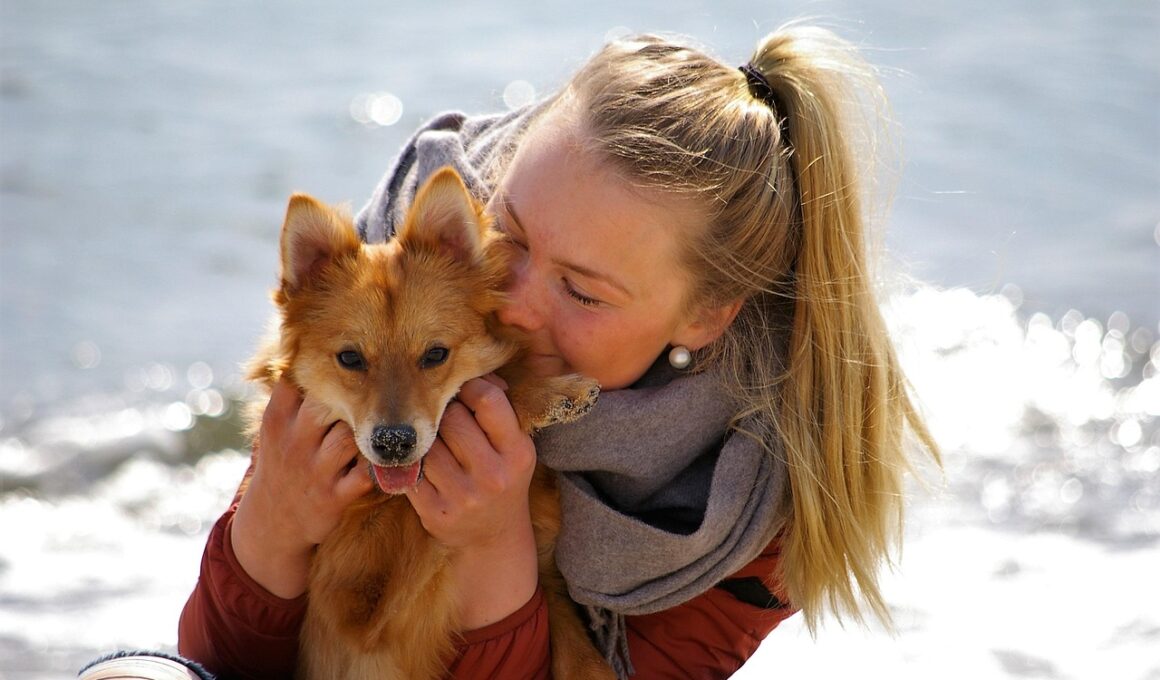Flyball Safety Tips for Dogs and Handlers
Flyball is a thrilling team sport that combines speed, agility, and teamwork. Understanding safety precautions is essential. To keep dogs and handlers safe, consider the following tips. First, ensure proper warm-up and cool-down exercises for dogs. These are crucial for preventing injuries. A gradual increase in intensity can help dogs prepare for the activity. It is also important to have a reliable handler. Choose someone familiar with the sport and capable of managing the dog effectively. In addition, create a safe training environment. Clear obstacles and ensure the surface is even to minimize risk. Health checks for dogs are vital; consult a veterinarian before competition or intense training. Regular grooming, including nail trimming, makes a significant difference in safety. Train with a consistent schedule to build familiarity, which reduces anxiety. Make sure your dogs are comfortable in the training space and with other participants. Monitor their behavior closely during practice; any signs of distress should be addressed promptly. Finally, stay hydrated during training sessions to keep both handlers and dogs fit for the action.
Common signs of fatigue in dogs include excessive panting or drooping tails. Keep an eye out for these indicators during activities. If any symptoms arise, take immediate action to allow for rest. Hydration is critical, especially in warmer months. Always have water nearby for your dog, providing opportunities for breaks. Another essential tip is to use the right equipment. Harnesses and collars should be fitted appropriately to avoid discomfort and ensure safety. Avoid using equipment that could injure the dog or distract the handler. Pay attention to the location of training sessions. Safe, designated areas for flyball training should be prioritized. Avoid areas with heavy foot traffic or distractions such as children or other dogs. Teach your dog to follow commands reliably during training practices. Clear communication between the handler and dog enhances safety and performance. Build a strong bond with your dog through positive reinforcement methods, creating a trusting relationship that could help during stressful situations. Safety must remain the priority, and continual assessment of both dog and environment is key to effective flyball training.
Equipment and Gear Safety
Safety in flyball involves the correct use of equipment and gear. A well-fitted harness can prevent accidents and injuries. Make sure it fits snugly but doesn’t restrict the dog’s movement. Additionally, always opt for flyball-specific equipment. This includes jumps and spring-loaded boxes that meet competition standards. Regularly inspect gear for wear and damage, and replace any items showing signs of fatigue. Soft surfaces help cushion falls and provide a safer environment. Gravel or turf is often recommended, since tough surfaces can lead to injuries. Consider investing in appropriate footwear as well; shoes should provide ample traction for handlers on various surfaces. It’s critical for handlers to wear suitable attire as well. Avoid loose clothing that could become entangled or create hazards. Dogs should have easy access to hydration at all times. Ensure water bowls are readily available during breaks in training. Always pack essential supplies and first aid kits when participating in events or training. Being prepared helps address issues swiftly and keeps everyone safe. Adequate preparation allows for a fun and successful flyball experience without unnecessary risks.
Consider the importance of socialization among dogs participating in flyball activities. Familiarize your dog with others before competitions or training. This will ease any tendencies towards aggression or anxiety, enhancing the overall experience. Use gradual introductions and supervised play sessions to achieve this. Familiar environments help dogs feel at ease and maintain focus during training. It’s essential to practice in varying settings to build comfort levels. In addition, handlers should stay mental health aware. Take breaks when feeling overwhelmed, as stress can affect decision-making during competitions. Utilize positive reinforcement techniques to build confidence in both dogs and handlers alike. Establish calm environments during training sessions to minimize distractions. Teach commands effectively, repeating consistently to secure understanding. Relying on familiar cues during competitions can eliminate potential safety issues. Recognition and praise encourage dogs to perform better, fostering a positive relationship. Always adapt workouts based on dog and handler condition to prevent exhaustion. Monitoring progress provides insight into their capability and readiness. Lastly, celebrate every achievement; positive reinforcement contributes to growth.
Handling Injuries and Emergencies
Preparedness for emergencies and potential injuries is critical in flyball. Ensure everyone involved knows basic first aid for both dogs and humans. A first aid kit should be part of every training session, with essentials like antiseptics, bandages, and cooling towels for injuries. Train handlers on recognizing serious signs that might require veterinarian attention. First, familiarize yourself with symptoms of heat exhaustion or injuries. These include limping, unusual behavior, or excessive drooling. In the case of injuries, stop the activity immediately and assess the frequency. Emergency services or a veterinarian should be contacted lawfully if injuries occur. Keeping accurate records of any incidents will also help track patterns and be useful for veterinary visits. Additionally, implement an incident response plan so all handlers understand proper procedures. Furthermore, maintain communication lines open amongst the team to ensure everyone is aware of possible risks. Empower handlers by teaching proper techniques to manage their dogs during risky situations. Regular safety meetings can bolster awareness and preparedness, making everyone more confident during training and competitions.
Finally, continuous education on flyball safety is vital. Attend workshops or training sessions to stay updated on the latest safety practices. Each session is a learning opportunity for handlers and dogs alike. Research the sport actively to familiarize yourself with new safety outcomes or techniques. Join local and online communities focused on flyball to exchange invaluable tips and experiences. Networking with experienced trainers can offer insights into safety that you may not have access to otherwise. Always remember to adapt to your dog’s individual needs, tailoring safety strategies accordingly. Recognizing specific requirements helps create a safer experience. Maintaining a proactive safety mindset fosters a thriving environment for both dogs and handlers. Celebrate achievements as you grow in the sport, further promoting safety. Regular discussions on safety topics improve practices and encourage vigilance among all participants. Prioritize keeping up with new developments, ensuring both dogs and handlers remain safe and informed. Foster a culture of safety that permeates each training session. The emphasis on safety ultimately elevates the flyball experience, providing joy and connection for all involved.
In conclusion, flyball safety for dogs and handlers is multifaceted. Prioritize proper warm-ups, hydration, and socialization. Ensuring all equipment is safe and in good condition can prevent injuries. Stay vigilant during training and competitions to address any potential issues promptly. Promote a positive environment that supports growth and confidence. Additionally, keep communication lines open among team members to maintain focus on safety measures. Be prepared for emergencies and understanding foundational first aid knowledge vital. Embrace continuous education and stay updated with the latest practices. Foster a strong bond with your dog while recognizing their capabilities and needs. Regular evaluation of safety strategies ensures a rewarding flyball experience. Emphasizing safety cultivates a pleasurable and exciting environment for all participants. Above all, enjoy the sport while practicing safe habits, allowing both the dog and handler to flourish beyond competitions. They will build trust and communication, ultimately leading to success in this thrilling sport. Lastly, make sure to celebrate every milestone, no matter how small, as growth is pivotal in flyball. Engage in this joyous journey to create lasting memories and connections.
By focusing on these essential safety tips, flyball becomes a fantastic experience for everyone involved. Remember that the bond between dog and handler is crucial; mutual respect and understanding enhance performance. Ultimately, the goal is to enjoy the ride while ensuring that both dogs and handlers remain safe within the active and competitive world of flyball. Committing to these safety measures will make every training session and event enjoyable while minimizing risks. Whether you are a rookie or a seasoned participant, instilling safety practices should always be a priority. Equip yourself with knowledge and be prepared to adapt as circumstances change. In conclusion, embrace the spirit of flyball safely, fostering a supportive community while engaging in this exciting, high-energy sport together. Following these guidelines leads to a fulfilling journey for both you and your dog. Each successful moment will draw you closer, building trust and skills that will last a lifetime. Celebrate the joy of flyball, ensuring it’s a safe and memorable experience for both dogs and their handlers.


